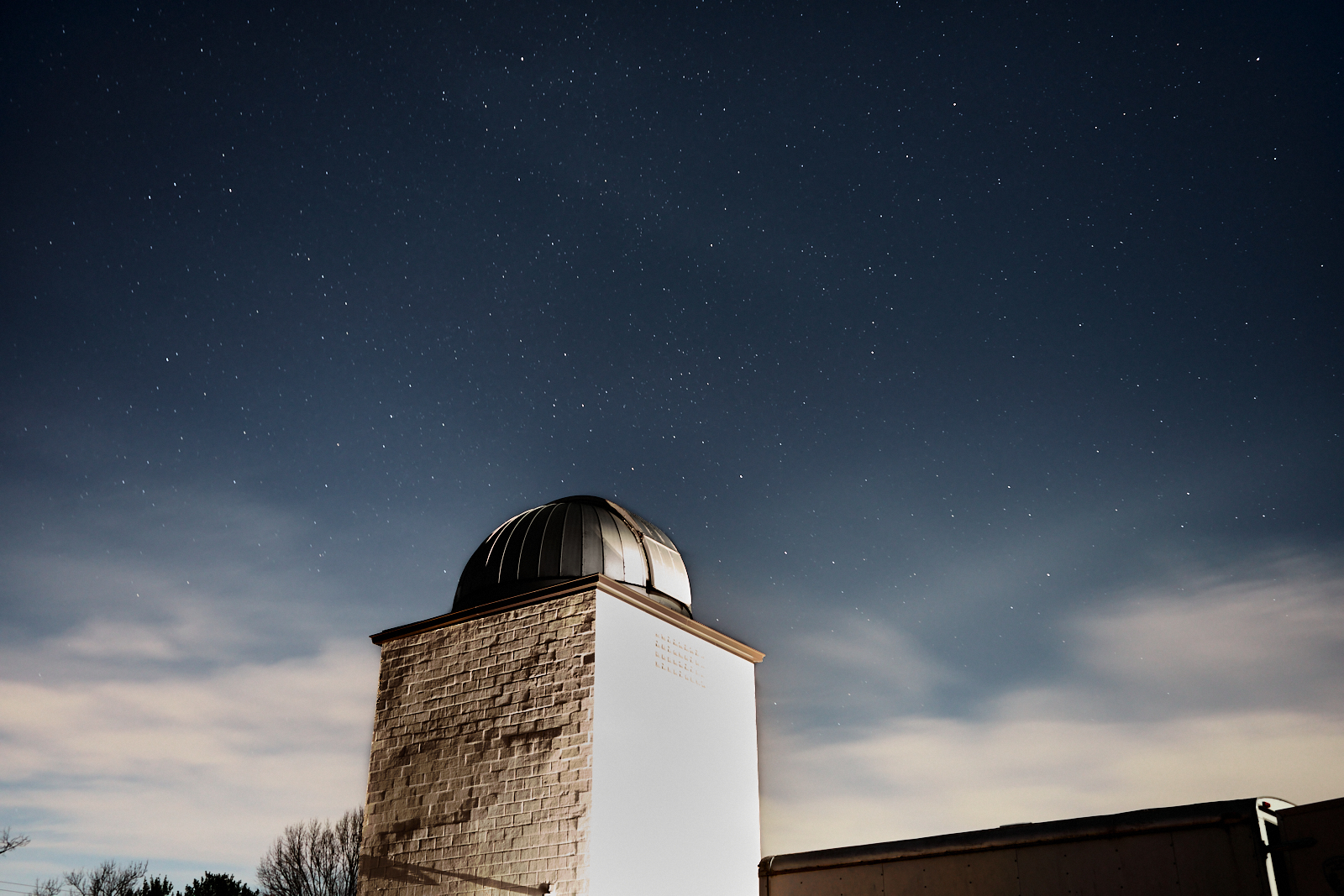
(Updated at 4:55 p.m.) After more than two years of development, a new set of regulations will officially preserve dark skies around Turner Park Farm Observatory in Great Falls.
At a meeting on Nov. 21, the Fairfax County Board of Supervisors unanimously approved zoning changes that aim to reduce light pollution and preserve dark skies within a half-mile of the observatory.
The proposal was significantly pared down after several community meetings and town halls. The changes will only apply to future lights on properties located within a half-mile of the observatory.
Dranesville District Supervisor John Foust said he was satisfied with the proposal, which he called a “very reasonable approach” to the challenge facing the community.
“It’s not unanimous in the community, but I will say that the opposition is much less almost justified than it was when this thing started,” Foust said.
Under the zoning ordinance amendment, motion-activated outdoor lights must be 1,500 lumens or less — a drop from the current limit of 4,000 lumens or less.
Additionally, all lights need to be fully cut off — meaning the bulb can’t be exposed — which is currently not required. Still, an exception to the cut-off and shielding requirements will remain for lights at a door or a garage of up to 1,500 lumens per fixture.
The regulations would also set limits on the number of up-lights or spotlights allowed. Currently, any number are allowed as long as they’re fully cut off or shielded to confine light. The changes would limit each fixture to 300 lumens.
Unlike at previous public hearings, divisive testimony was limited. Several testifiers spoke in favor of the changes to the zoning ordinance.
Jennifer Falcone, a representative for the Great Falls Citizens Association, said the proposal is integral to protecting a “treasured community resource.”
“I live within this area,” Falcone said. “Given the evolution of lighting technology and the introduction and popularity of LED lighting, GFCA believes this measure is especially appropriate.”
Eileen Kragie, president of Dark Sky Friends, a nonprofit organization that aims to preserve dark skies, emphasized that the changes are sorely needed.
“Light pollution is growing at twice the rate of the population,” Kragie said. “In 20 years, stars won’t be visible.”
Mount Vernon District Supervisor Daniel Storck said the proposal’s approval could pave the way for future changes.
“This is in my mind…the start of a process that is mostly voluntary,” Storck said. (The spelling of Supervisor Storck’s name has been corrected.)
The amendment’s passage came on the same day that the Board of Supervisors approved zoning changes that will permit brighter electronic signs in more urbanized and commercial districts.
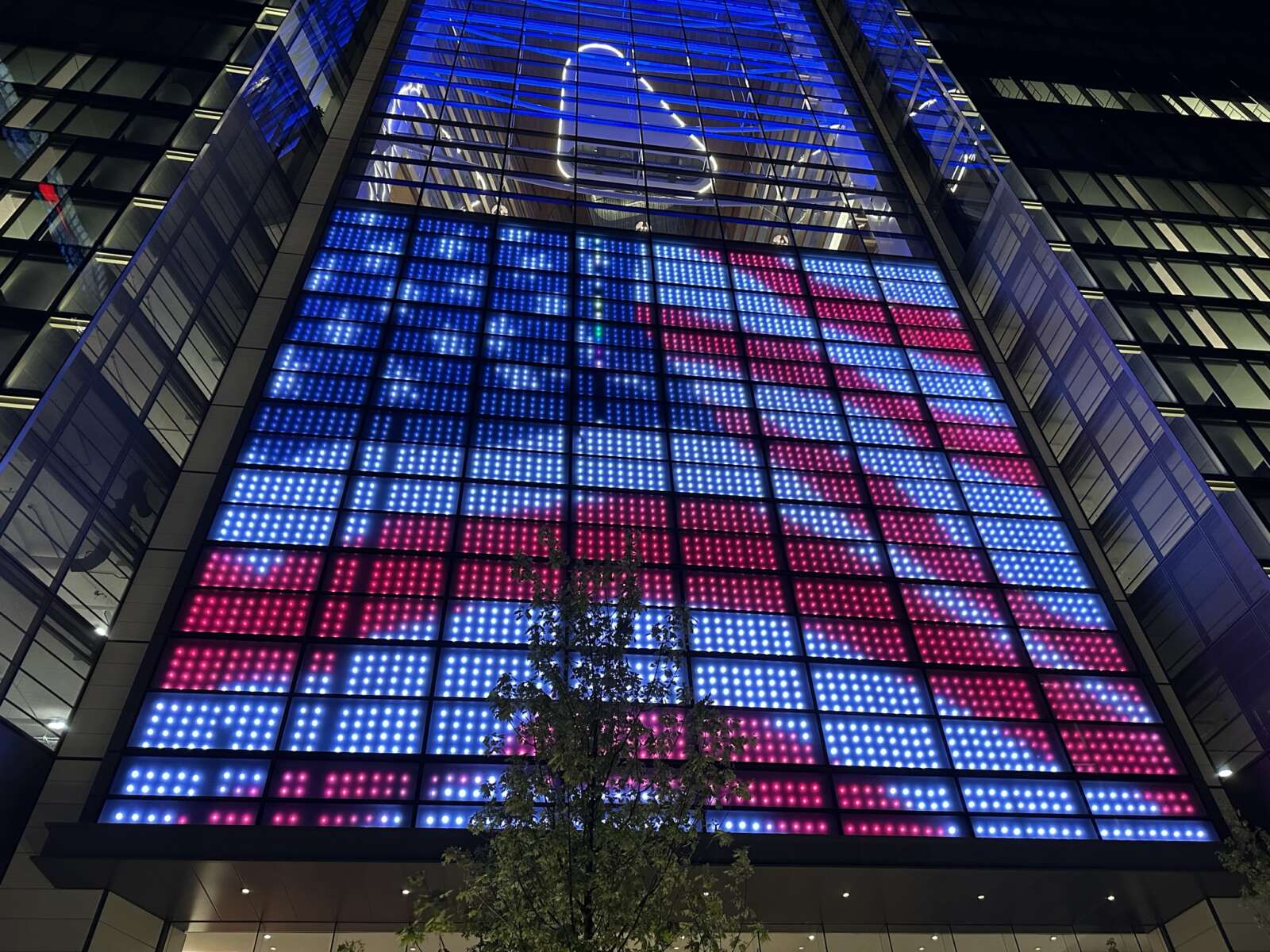
Electronic signs on display at eligible businesses, schools and other establishments can now shine brighter at night.
In planned, commercial and industrial zoning districts within Fairfax County, electronic display signs can now reach brightness levels of up to 300 nits at night, compared to 100 nits previously.
The Board of Supervisors unanimously approved the change to the county zoning ordinance after a public hearing at its Nov. 21 meeting.
“Nits” indicate an object’s brightness. Common cellphones, televisions and computer monitors have nit levels between 250 and 600, according to a county staff report. Under existing county rules, a lot has a designated amount of “freestanding sign area” and may have one electronic display sign that uses up to 50% of that area.
“During outreach on this amendment, we did receive feedback from industry that modern screens are getting brighter, including the widespread use of LED technology,” said Casey Judge with the county’s Department of Planning and Development.
Feedback and research led to county staff’s recommendation to increase the maximum brightness, Judge said.
In residential districts, the maximum nit level will remain 100 nits at night. The 100-nit limit will also apply to any electronic display signs visible to a single-family dwelling within 150 feet of the property with the sign.
Staff had recommended increasing the maximum nit level to 500 nits in planned, commercial and industrial areas in an Oct. 3 report. However, the Fairfax County Planning Commission recommended the ultimately approved 300-nit maximum and the 100-nit maximum for signs located near single-family homes, Judge said.
“I’m not sure 150 feet is the right number, but I think this is one of those things, over time, we’ll probably be getting feedback if it’s too short,” Hunter Mill District Supervisor Walter Alcorn said.
Three community members spoke during the public hearing. Kenny Peskin, a McLean resident who identified himself as an employee of the International Sign Association, said he was “generally in support of the motion,” in particular the version in the staff report with the higher nit limit.
Eileen Kragie, founder of an organization called Dark Sky Friends that advocates against light pollution, spoke against artificial light at night, but called the work “a credible first cut for the electronic signage ordinance.”
Jennifer Falcone called in on behalf of the Great Falls Citizens Association, reporting that the board of the association supported the motions adopted by the planning commission.
Changes to the zoning rules for outdoor signs have been in the works for over a year. Staff presented an initial proposal in May that underwent two public hearings with the planning commission.
Other approved changes include combining three sign application processes and permitting illuminated window signs of up to 4 square feet in non-residential locations.
County staff will provide a report on the implementation of the new guidelines within 18 months.
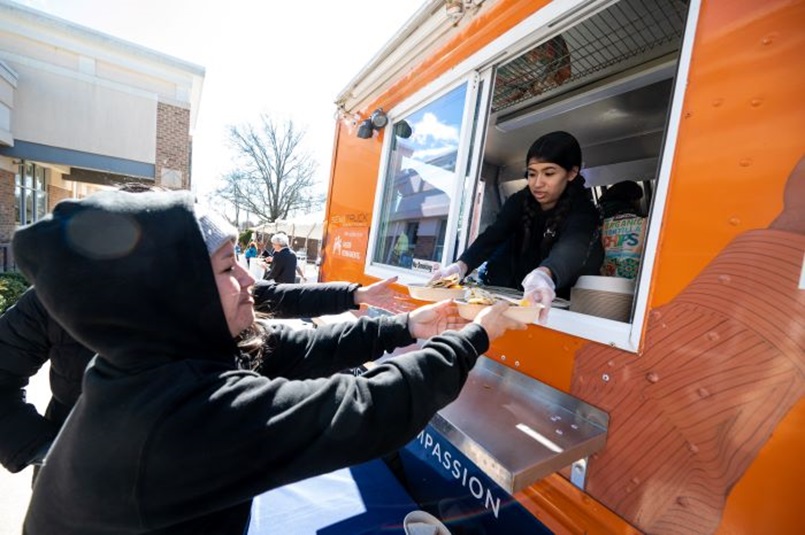
A nonprofit that has been serving free meals made at Lewinsville Senior Center throughout the COVID-19 pandemic hopes to establish a permanent presence at the McLean facility.
Fairfax County Neighborhood and Community Services (NCS), which operates the senior center at 1613 Great Falls Street, applied in late 2022 for a special exception amendment that would let SevaTruck Foundation keep using the center’s kitchen to cook, store and package food.
NCS is now seeking public input on its partnership with SevaTruck. It will host four information sessions on the application, starting with a virtual meeting on Thursday, Nov. 16 at 11:30 a.m. to 1 p.m.
“SevaTruck serves a crucial role in addressing hunger and food insecurity and has a deep understanding of the communities it serves,” NCS said in a press release announcing the meetings.
SevaTruck provides “free, fresh, nutritious warm meals to children attending Title 1 Schools and…living in historically low-income, marginalized communities across Fairfax County and the Washington DC, metropolitan area,” according to a statement of justification for the application.
Areas served so far include McLean, Tysons, Reston, Herndon, Fairfax, Annandale, Falls Church and Alexandria. The nonprofit also has chapters in Richmond, Michigan and the San Francisco Bay Area.
The D.C. area chapter began operating out of Lewinsville Senior Center early in the pandemic after the Fairfax County Board of Supervisors declared a local emergency, which suspended zoning requirements that would “preclude a temporary modification to an activity, use, or structure where the Zoning Administrator determines the modification is needed to respond to the COVID-19 emergency and its impacts.”
However, the county’s official state of emergency for Covid ended on March 1, giving SevaTruck and other organizations or businesses operating under an emergency waiver 12 months to obtain the approvals and permits necessary to continue.
In the application, NCS regional manager Karen De Mijango says two SevaTruck employees work out of the senior center Monday through Friday, preparing 1,800 meals a week that are delivered to around 1,400 Fairfax County residents both on-site and off by an 18-foot-long food truck.
“Meals are either picked-up from the senior center by partners, delivered in either a personal car, or in the food-truck,” De Mijango wrote in the statement to the county’s zoning division. “Partners picking up from the center does not cause disruptions to the senior programs. SevaTruck uses the backdoor of the kitchen to load/unload with a cart-roller.”
She noted that SevaTruck is seeking to expand by boosting its base of volunteers to assist with off-site food distributions, but no increase in staff is planned.
The application is currently scheduled to go to the Fairfax County Planning Commission for a public hearing on Jan. 24, 2024. Two more virtual information sessions will be held on Dec. 12 and Jan. 11, and an in-person meeting is planned at the senior center on Jan. 9.
A hearing before the Board of Supervisors, which is responsible for approving the application, hasn’t been scheduled yet.
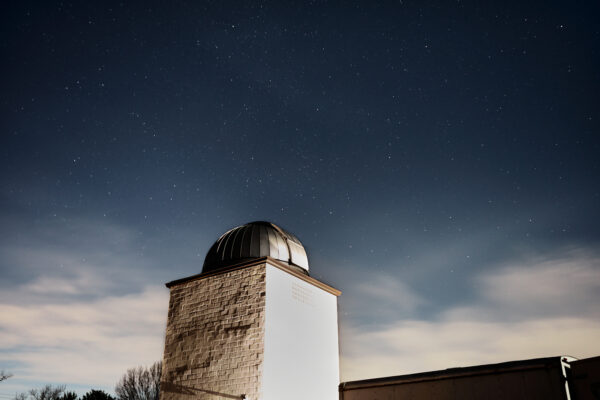
An effort to preserve dark skies in Great Falls recently got a vote of support from the Fairfax County Planning Commission amidst contention within the community.
At a heated Oct. 18 meeting, the commission unanimously recommended approval of regulations to preserve dark skies around Turner Park Farm Observatory Park. Public testimony, however, was divided into two camps.
Proponents called the proposal a necessary step to preserve dark skies, reduce light pollution, and ensure astronomers can continue to get clear views. Opponents said the changes would decrease safety, were being considered without direct community engagement, and did little to result in a meaningful impact on light pollution.
The regulations, which limit outdoor lighting with a half-mile of the observatory, have been in the works for years. The latest version was pared down after several town halls and an online community survey.
Under the proposed zoning ordinance amendment, motion-activated outdoor lights must be 1,500 lumens or less — a drop from the current limit of 4,000 lumens or less. Additionally, all lights need to be fully cut off, which is currently not required.
Still, an exception to the cut-off and shielding requirements will remain for lights at a door or a garage of up to 1,500 lumens per fixture.
The regulations would also set limits on the number of up lights or spotlights allowed. Currently, any number are allowed as long as they are fully cut off or shielded to confine light. The changes would limit each fixture to 300 lumens. Changes would apply to future lights.
But some residents said they were in the dark about the proposal. They also said they were concerned about the safety impacts of reduced lighting.
Laszlo Zsidai, president of Foxvale Farm’s homeowners’ association, said the neighborhood of 115 homes received no direct engagement from the county on the amendment, noting that an online community survey conducted by the county found 50% of respondents were not supportive of the changes. A survey conducted by the HOA of its own community found similar levels of support, he said.
He also questioned if regulating lights near the observatory was effective in the shadow of other high-rise, luminous developments in surrounding areas like Tysons.
“Their light pollution will eat us up,” Zsidai said.
Great Falls has a visibility level of around 6 when judged on a Bortle scale where 1 means excellent viewing and 9 means poor viewing.
Dranesville District Commissioner John Ulfelder emphasized that Great Falls has one of the lowest crime rates compared to other parts of the county.
“Crime in Great Falls is not rampant. It’s not even serious. But it’s important to feel that they have a sense of security,” Ulfelder said.
Others, including the Great Falls Citizens Association and several astronomy organizations, expressed support for the proposal.
Thomas Reinert, president of DarkSky International, described the regulations as a compromise. He noted that students at Thomas Jefferson High School for Science and Technology near Lincolnia can no longer use a telescope on their facility due to the increase in light pollution over the years.
The observatory at Turner Farm is among a handful of facilities in the area where astronomical viewing can continue — for now.
“In no sense are these rules onerous,” Reinert said.
Dr. Peter Flavchan, a professor of phusics and astronomy at George Mason University, emphasized that light pollution has doubled in just the last 10 years. He compared the community to a “proverbial frog” sitting in water that is slowly reaching a boiling point.
The proposal heads to the Fairfax County Board of Supervisors for a final vote on Nov. 21.

Fairfax County’s efforts to establish more regulations for data centers are heating up.
With the industry continuing to grow in Northern Virginia, the Department of Planning and Development (DPD) presented guidelines on issues like noise, water and air quality, energy demand and aesthetics to the Board of Supervisors’ land use policy committee on Tuesday (Oct. 17).
Currently, the county allows data centers by right — meaning they only need administrative approvals instead of going through a public hearing process — in industrial districts, along with medium or high-intensity office districts and some special planned districts.
The zoning code that got re-adopted in May prohibited data centers in residential districts and added size, cooling, ventilating and equipment enclosures requirements.
Deputy Zoning Administrator Carmen Bishop said the county could consider establishing a maximum size that “would be allowed by right.” Larger sizes could be allowed with special exception approval.
“Now, of course, another option could be to require special exception approval for all data centers regardless of size,” Bishop said. “Other locational considerations could include setbacks, screening, additional screening requirements and other performance criteria.”
Data centers require generators, which can be noisy, according to county staff. To mitigate the noise impacts, Bishop said the county could consider requiring noise modeling, expanding existing equipment enclosure requirements and establishing standards for emergency generator usage and testing.
To protect water quality standards, the county could require monitoring before discharging to the wastewater system.
“If the monitoring indicates a need for pretreatment, then that could be required to be provided on-site,” Bishop said.
The DPD also proposed adding safety features for diesel handling and spill containment.
As for aesthetics, county staff suggested adding standards for facade differentiation, defined entrance features and screening.
Katie Hermann, the DPD’s environmental policy branch chief, said there could be added guidelines dictating LEED certification for data centers.
She said the county could also consider a salt management plan for exteriors spaces, maximizing tree preservation, and where applicable, establishing conservation easements or dedications to the Fairfax County Park Authority.
Loudoun County is the leading place in the country for data centers, with more than 100 projects, according to county staff. Fairfax County currently has at least 12 data centers, with five more in the pipeline and a controversial project in Chantilly nearing approval.
Research found that the demand for data centers is expected to double from 2022 to 2030.
Next Thursday (Oct. 26), the DPD will meet with the Fairfax County Planning Commission’s land use process Review Committee. Then, the department will put together a final report to submit to the board by December.
“We envision the board potentially directing staff to prepare proposed amendments to the comprehensive plan and or the zoning ordinance and those amendments would go through their own process, including public hearings before the Planning Commission and the board,” Hermann said.
Photo via Jordan Harrison/Unsplash
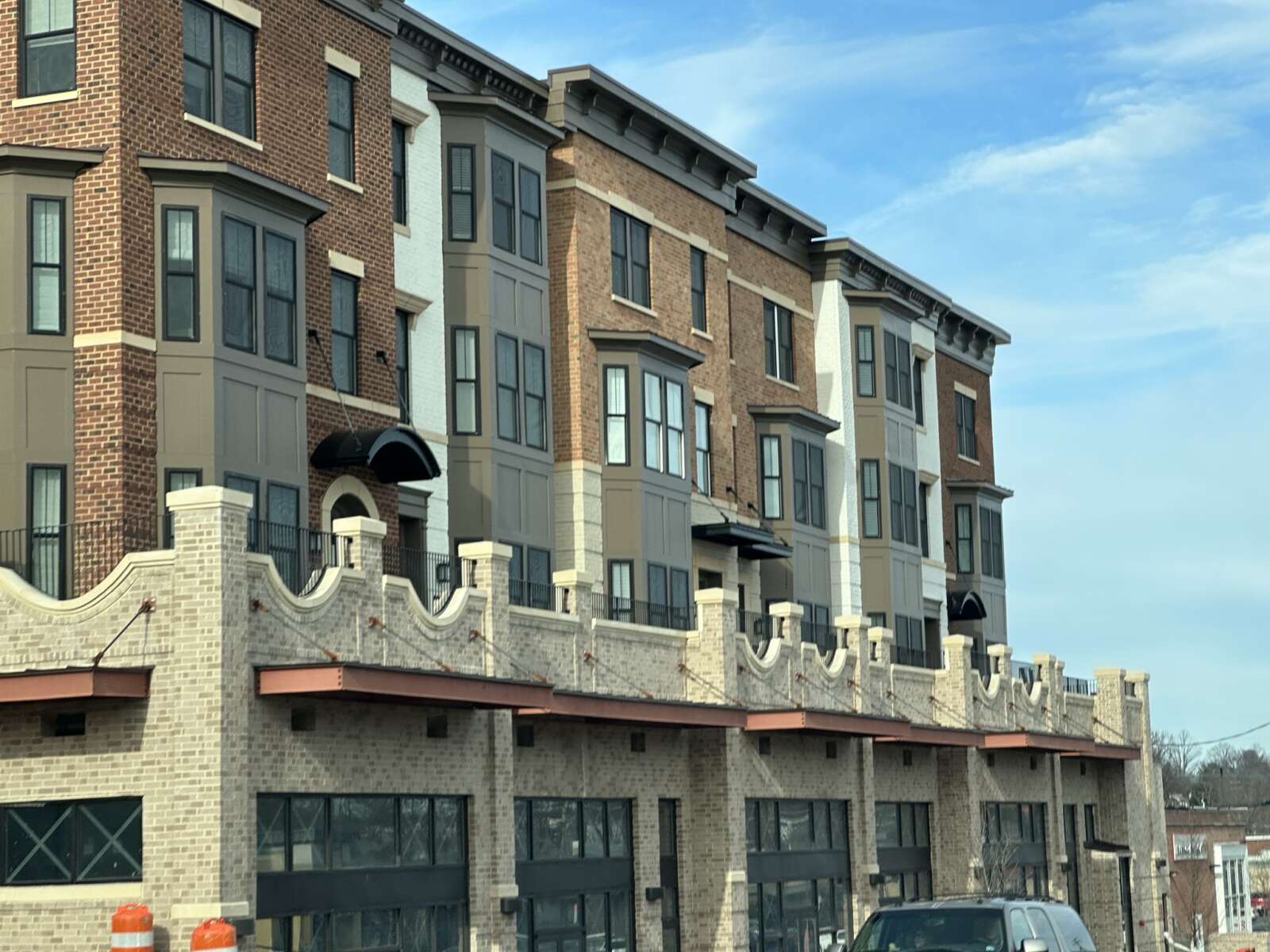
Any future buildings constructed in the heart of Vienna will get a little more vertical wiggle room under the town’s impending new zoning code.
Slated for adoption right on schedule at the town council’s meeting next Monday (Oct. 23), the first comprehensive rewrite of Vienna’s land use regulations since 1969 will introduce a few new uses and simplify the zones and districts that guide development.
Among the more potentially noteworthy changes will be an increase in the maximum height for buildings in the newly named Avenue Center (AC) and Gateway South (GS) districts, which can be found, respectively, along Maple Avenue between Lawyers Road and Glyndon Street, and at the corner of Park Street and Cedar Lane (essentially just the Cedar Park Shopping Center).
Under the updated code, buildings in those districts could be up to 42 feet tall, up from the current limit of 35 feet. However, any part within 95 feet of a residential property would be required to drop back down to 35 feet.
As noted by town staff in a summary of the code changes, the height increases are proposed “in very specific locations,” but they address a top focus of the zoning overhaul, which was initiated in 2020 partly in response to resident concerns about the size of developments on Maple Avenue.
In place from October 2014 to June 2020, the controversial Maple Avenue Commercial (MAC) zoning ordinance sought to revitalize Vienna’s central corridor by giving developers more height and density in exchange for needed amenities.
The incentives drew developers, but the resulting projects — including the Chick-fil-A/Flagship Carwash, the recently opened Sunrise Senior Living, the Vienna Market townhomes and the not-yet-built Wolf Trap Hotel redevelopment — became so hotly contested that the town put the ordinance on hold in 2018 before repealing it two years later.
It remains to be seen whether the zoning code overhaul, known as Code Create, will produce similar reactions.
In addition to reorganizing the code to be easier to navigate, the 331-page draft consolidates the town’s jumble of zoning classifications by creating a single zone for all multi-family attached residences and grouping commercial areas into districts based on “geographic integrity and common development patterns.”
“By doing so, the Town will be able to recalibrate more frequently, as needed and desired, to adjust for evolving conditions within a particular geographic area,” town staff said.
Other notable changes include:
- A “step down” in height from 45 feet to 38 feet for commercial Mill Street buildings within 30 feet of a residential property
- Townhouses can now have three full stories, not just 2.5 as previously allowed, though the height limit of 35 feet is unchanged
- Open space requirements for multi-unit residential developments, in place of a 25% cap on lot coverage that has been waived for every approved project in the past decade
- More standardized — and, in some cases, bigger — setbacks for commercial properties
- Newly defined uses for cottage housing, community gardens, cultural facilities or museums, adult day support centers, animal care facilities with boarding, brewpubs, continuing care facilities, shared kitchens, specialized instruction, composting drop-off facilities and craft beverage production establishments
- More detailed lighting regulations
- More relaxed, simplified sign standards, including allowing hanging signs in all commercial areas
- The first-ever bicycle parking regulations
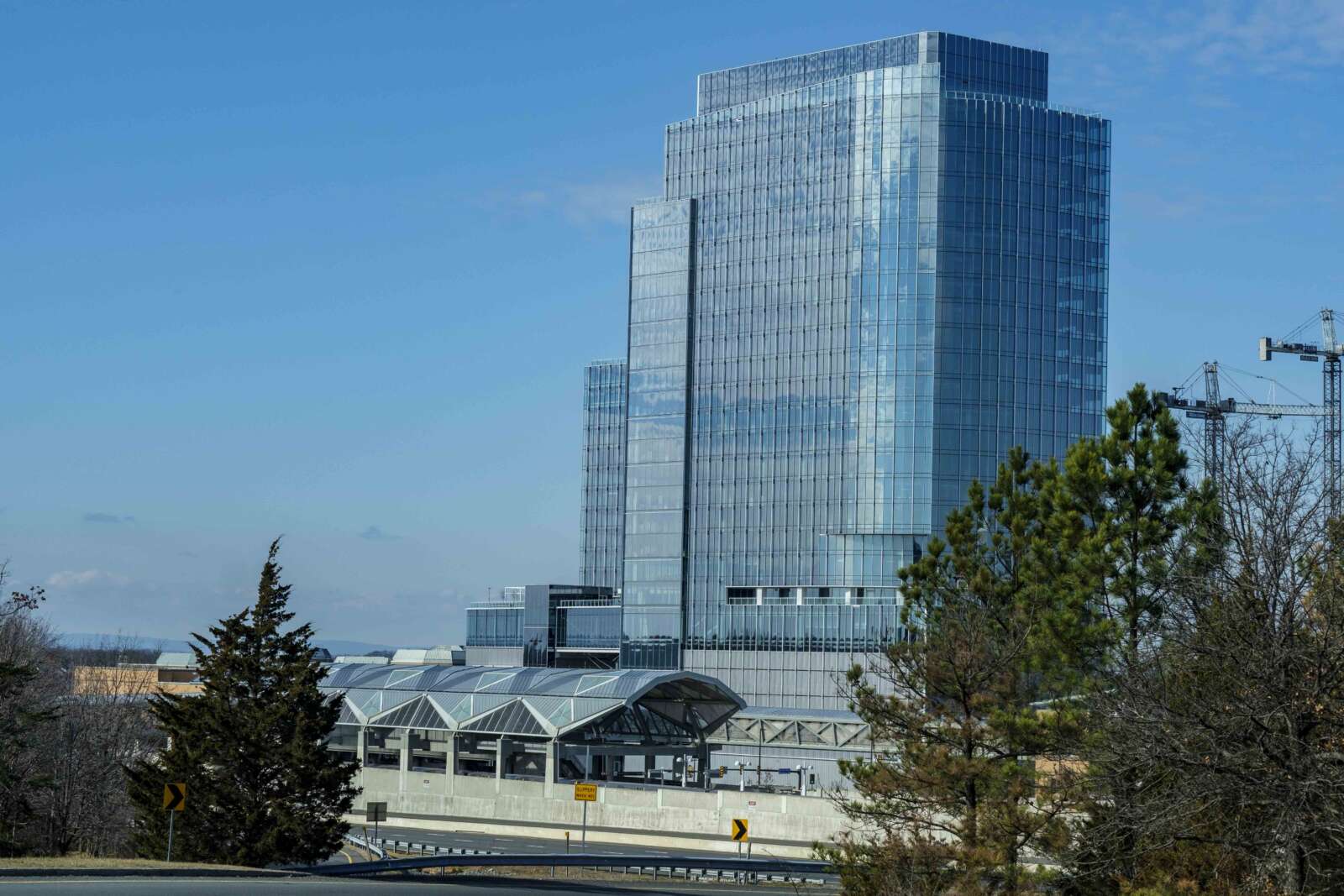
Proposals for several major land use changes in Reston’s transit areas are now moving forward.
The move comes after the Fairfax County Board of Supervisors unanimously approved an overhaul of Reston’s comprehensive plan last week.
The Reston-related applications submitted via the countywide Site-Specific Plan Amendment (SSPA) process were set aside in the spring as work on the plan continued.
Leanna Hush O’Donnell, director of the Fairfax County Department of Planning and Development, says, now that the comprehensive plan is in place, the SSPA applications have been prioritized for review in the top tier of the county’s work program.
“Staff is in the process of developing a schedule for review as well as an inclusive community outreach plan for review of the amendments,” O’Donnell wrote in a statement. “Updates will be shared through the Comprehensive Plan Amendment listserve, our website, and social media.”
Most nominations in Reston’s transit area pushed for more residential uses in lieu of or in addition to office uses.
The Hunter Mill District received the highest number of SSPA nominations for 2022-2023. Overall, the county received 75 nominations — 36 of which were ultimately added by the Board of Supervisors to the county’s comprehensive plan amendment work program.
The SSPA process kicked off in July 2022, allowing the county to review proposed land use changes for individual sites. This was the first year to follow a revised process that allowed sites anywhere in the county to be nominated instead of alternating between north and south.
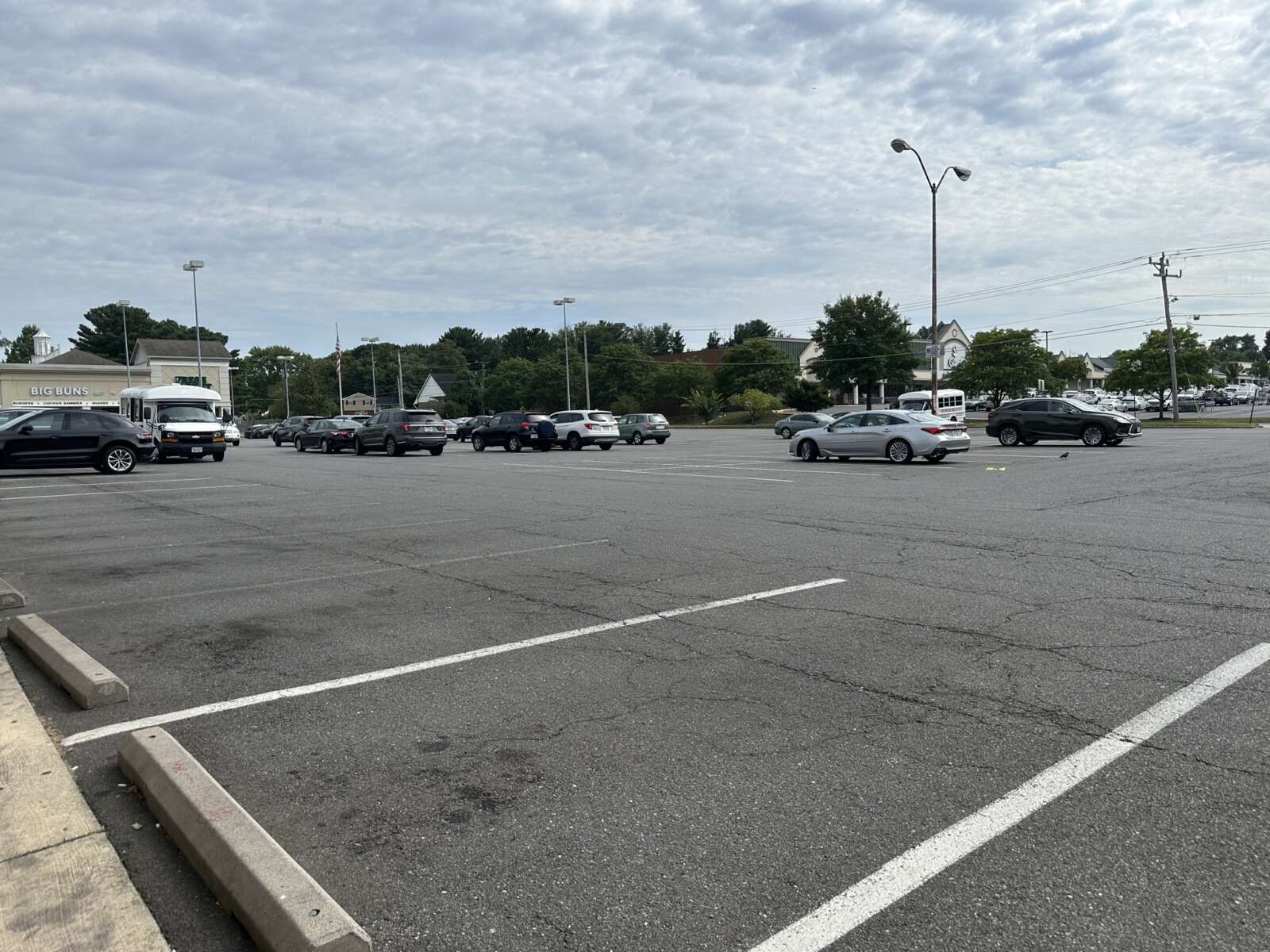
Vienna’s proposed new zoning code got a critical vote of confidence last week.
At its meeting on Wednesday (Aug. 23), the Vienna Planning Commission unanimously approved a letter to the town council recommending that it adopt the latest draft of a document three years in the making, one that will guide everything from development on Maple Avenue to the amount of space a backyard deck can occupy for the foreseeable future.
“I really appreciate all the work that everyone has put into reviewing this over the last year, and staff cannot be thanked enough for the immense lift,” Planning Commission Chair Jessica Plowgian said after more than three hours of discussion. “…We would not have done any of this without all of your efforts.”
The commission’s support did come with a number of caveats, as members identified issues in the 323-page draft that they feel should be reviewed either before or shortly after the council votes on Oct. 23.
One of the biggest unresolved questions is how the town will handle parking, which has long been a challenge for residents, visitors and business owners. With a separate study of parking supply and demand already underway, the draft code makes “minimal changes” to the existing requirements, the planning commission noted in its Aug. 24 letter to the town council.
“Parking is a significant concern for [the] Planning Commissioners,” the letter said. “…Planning Commissioners requested that parking requirements be reevaluated and Chapter 18 [of the town code] be amended as soon as possible after completion of the parking study.”
The commission also suggested that the town further evaluate comments from community members on outdoor lighting standards for residential and commercial properties as well as signs, potentially by hiring a consultant.
On some sections, the commission offered more specific critiques, suggesting, for instance, that driveways for single-family houses have at least a 5-foot radius.
Several commissioners questioned whether a 30% open space requirement is sufficient for multifamily residential uses, though two were “neutral” on the issue and one thought that standard seems adequate.
The commission was also split on whether to remove an eight-seat limit on temporary outdoor dining areas that are within 60 to 75 feet of a residential property. Part of an ordinance adopted in May 2022 to allow more flexibility for outdoor dining, the cap prohibited a patio for two Church Street restaurants that had drawn noise complaints.
One of those restaurants, Blend 111, closed permanently on Aug. 12.
While a majority of planning commissioners supported removing the seating limit, two members “raised concerns about an increase in the number of tables resulting in noise complaints,” according to the letter.
A section addressing ground-floor uses in residential or mixed-use buildings provoked a strong reaction. The current draft says only that a “lobby and similar areas which serve upper-story residential uses may be located on the ground floor but may not occupy the entire ground floor.”
“That’s wholly inadequate in my view,” Commissioner Matthew Glassman said.
To ensure mixed-use residential buildings provide “meaningful commercial space open to the public on the ground floor,” the commission recommended that more than half of the ground floor be dedicated to non-residential uses and the remaining space can be used for a lobby or other amenities for residents.
Some commissioners proposed going even further and requiring 75% of the ground floor be non-residential uses.
“There does seem to be pretty strong support for this particular issue, that everybody wants at least this change, if not a stronger change to what’s there,” Plowgian said.
The Vienna Town Council will review the planning commission’s recommendations, along with almost 700 pages of public comments, during its 8 p.m. meeting tonight (Monday).
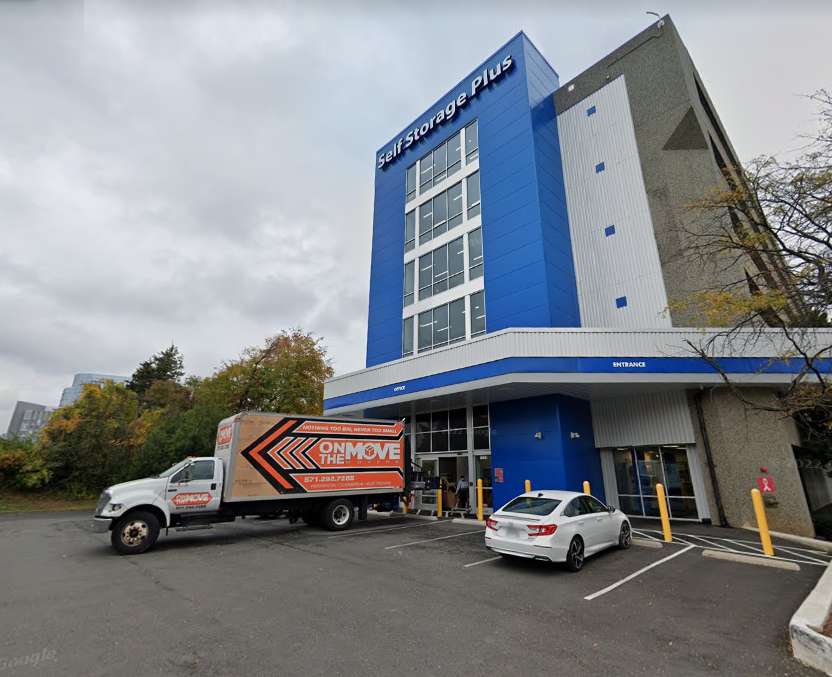
The storage functions offered by Self Storage Plus in Tysons weren’t meant to extend to the parking lot, the Fairfax County Department of Code Compliance (DCC) says.
The self-storage facility at 1764 Old Meadow Lane faces potentially hundreds of dollars in fines for keeping mobile storage units and other commercial vehicles in its parking lot, according to a notice of violation issued by a code compliance investigator for the county on July 26.
Self Storage Plus is seeking to fight or at least postpone the notice, stating that it opened the facility in 2020 “in good faith” under the assumption that commercial vehicle parking was permitted on the site.
“They were unaware that the storage of exterior storage units and the commercial parking of vehicles and trailers on the parking lot of the Subject Property was not in conformance with the approved proffers that govern the site,” Walsh, Colucci, Lubeley & Walsh partner Lynne Strobel wrote in an Aug. 23 appeal statement on behalf of Self Storage Plus.
According to the county’s notice, investigator Matthew Stengel found during a July 19 inspection that “exterior storage units, vehicles, and trailers [were] being stored in the parking lot” in violation of the site’s development conditions, which were approved in 2016.
The county’s Zoning Evaluation Division issued a letter on Jan. 24, 2018 confirming that the plan requires “that loading areas be fully enclosed…with no outward signs of storage bay doors, storage items or lighted hallways.”
“The use limitations further state there shall be amble [sic] circulation and parking on-site and that there must be no incidental parking and storage of trucks, trailers and/or moving vans,” the letter said.
Self Storage Plus was hit with a notice of violation for the same issue on Feb. 18, 2022. The county imposes a $200 fine for a first zoning proffer violation and $500 for each subsequent violation.
The notice directs the company to remove the vehicles from the parking lot or amend its development plan to allow the “incidental parking,” which requires the approval of the Fairfax County Board of Supervisors.
Noting that the property was previously used for self-storage by CubeSmart, Strobel says Self Storage Plus believed, based on feedback from industry consultants, that a portion could be used for off-street commercial parking, and the portable storage units were allowed as an accessory use, since they support the main storage establishment.
“Therefore, the Owners reasonably believed it was lawfully permitted to park commercial vehicles and trailers…as well as maintain exterior storage units,” Strobel wrote, arguing that the company would be unable to “effectively operate” its facility without the vehicles.
According to the appeal statement, the 2022 violation was also appealed and later voided by the Virginia Supreme Court’s strikedown of the county’s updated zoning ordinance, which got re-approved by the Board of Supervisors without significant changes on May 9.
The new appeal is intended to protect Self Storage Plus’ rights and stop any enforcement of the violation while the company conducts “additional research, investigation, and discussions with County staff.”
The company also plans to “explore possible legislative land use solutions,” such as an amendment, to legally allow the commercial vehicle and storage unit parking.
If accepted for review by the county, the appeal will go to the Board of Zoning Appeals, followed by the Board of Supervisors.
Image via Google Maps
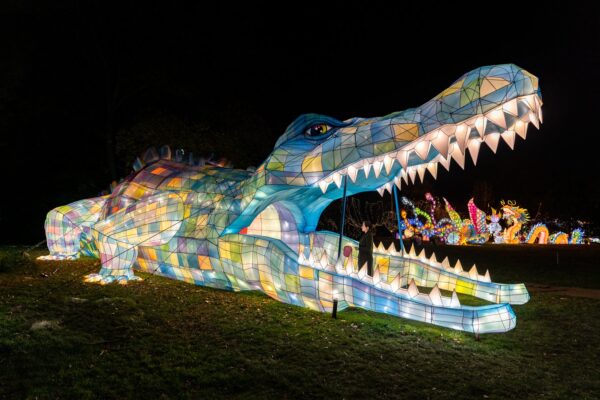
Though it may be hard to believe on a 100-degree day, winter will come to Fairfax County again, and when it does, Kaleido Entertainment and Arts Group will be ready.
The company hopes to bring its Winter Lantern Festival back to Tysons after a buzzy and evidently successful inaugural run from Dec. 16, 2022 to Feb. 12 of this year.
For the festival’s return to the D.C. area, Kaleido is planning an even longer season that will kick off around Thanksgiving on Nov. 24 and continue through Feb. 18, according to a special permit application filed with Fairfax County on July 20.
While the previous event was allowed under a temporary special permit, the festival needs to get the Board of Zoning Appeals’ approval this time, because it will last longer than 21 days.
Like before, the event will feature hundreds of illuminated paper lanterns crafted into animals, natural and mythic scenes, and other designs. A list in the application suggests the displays will be laid out in quadrants according to four themes: ocean song, animal world, creative technology and cartoon paradise.
If approved, the festival will again be held in Lerner Town Square at Tysons II (8025 Galleria Drive). The proposed operating hours are 5-9:30 p.m. on Friday, Saturday and Sunday.
Kaleido anticipates having 10 employees on site and 2,000 patrons, though it’s unclear whether that’s per day or over the festival’s full stay. A public relations consultant for the company didn’t return a request for comment from FFXnow by press time.
“Patrons came by cars [or Metro] from 5 pm – 9pm after work on weekends. Last year there were no reported traffic concerns or accidents,” the application’s statement of justification says. “We expect NO negative impact of traffic in and out of Tysons during the hours of operation.”
According to the statement, Tysons II property owner Lerner has agreed to provide 6,046 parking spaces for the festival at five office buildings in the development, which also encompasses Tysons Galleria.
“It is much more than needed,” the application says.
The county hasn’t officially accepted the application for review yet, so the zoning appeals board hearing doesn’t have a scheduled date.

